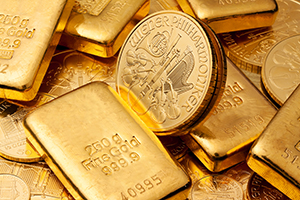 No concept or theory in economics is easier to understand or more important than the fundamental law of supply and demand. Prices and profits are ultimately determined by the number of willing sellers (suppliers) and the number of willing buyers (consumers). In the precious metals market, supply comes from mine production, net government sales, and existing scrap gold and silver that are melted down for its pure precious metal content.
No concept or theory in economics is easier to understand or more important than the fundamental law of supply and demand. Prices and profits are ultimately determined by the number of willing sellers (suppliers) and the number of willing buyers (consumers). In the precious metals market, supply comes from mine production, net government sales, and existing scrap gold and silver that are melted down for its pure precious metal content.
Demand is a little more nuanced than supply. New supply has to be found while new demand needs to be created. The World Gold Council reported global demand for gold in the first quarter of 2014 at 1,074.5 tons, while the supply of gold was up one percent (year-over-year) to 1,048 tons in the first quarter of 2014. According to the 2014 World Silver Survey, total demand for silver was 1,081 million ounces while total physical supply of silver was 978.1 million ounces.
Creating Demand
Demand for precious metals is generated through several different channels. For thousands of years, civilizations around the world have placed a high value on the rare, shiny metal. The world demands gold for manufacturing jewelry, gold coins, bullion, and bars, and for its excellent conductivity properties.
Gold jewelry became ingrained in many cultures around the world. India and China account for roughly 50 percent of the world’s gold jewelry demand. In addition, as the standard of living and amount of disposable income rises in the two countries, more people want, and can afford to own gold and gold jewelry. Today, about 45 percent of the world demand for gold is based on its use in jewelry. Another 33 percent can be attributed to investment and about 7 percent is used in technology and certain industrial applications.
Investors are also driving demand in gold and other precious metals. Physical gold purchases have been on the rise and the trend shows no sign of slowing down. People are buying precious metals because the are afraid. They are afraid of rising world tensions, wars and terrorist activities around the world. They are afraid of countries defaulting on their debt and weak currencies. Fear is driving demand in 2014. Throw in the actions of the U.S. Fed and other central banks and the distinct possibility of high inflation in the coming years, and there are more than enough reasons to believe that demand for precious metals will continue to outstrip supply.
When you look at the statistics, it should give you confidence that the classic supply/demand equation favors higher gold and silver prices. More demand and lower supply can only mean good things are ahead for those that own precious metals.
